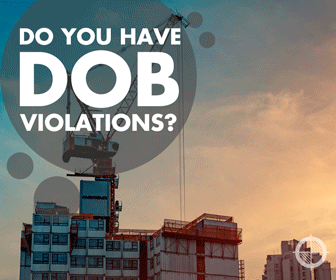
Powering Up: Applications Open for E-Bike Charging Cabinets
The New York City Department of Transportation (DOT) is rolling out sidewalk charging stations for e-bikes to reduce deadly fires caused by lithium-ion batteries.

Building Inclusivity: Women Who Paved the Way
As part two of our “building inclusivity” series, this March we will be celebrating the long history of women in the construction field; from empowering stories of accomplishment to unveiled hidden histories, this article seeks to uncover the lesser-known voices that helped build this industry.

Building Inclusivity: Celebrating Black History in Construction, Architecture, & Engineering
In celebration of Black History Month, we’re highlighting some influential Black figures in construction, architecture, and engineering history. Even if you don’t know them by name, you will probably know their work!

Leaving Lead Behind: How NYC Plans to Replace Lead Pipes
One in five New Yorkers may be drinking lead-contaminated water, according to an alarmingly recent report. With over 150,000 lead pipes citywide, replacing our infrastructure will be a colossal undertaking—and the plans are already in motion.

Outsource Special Inspections Becomes Class 1 Agency
Outsource Special Inspections (OSI), a trusted source for special inspections in New York City since 2012, is excited to announce its transition from a Class 2 to Class 1 agency. This upgrade, which significantly expands the amount of inspections offered by OSI, marks a major milestone for the company.

Outsource Consultants Inc becomes SCA Certified MBE
Outsource Consultants, Inc., expediting, building code, and zoning experts in New York City for 30 years and counting, is thrilled to announce a new MBE certification from the New York City School Construction Authority (NYC SCA). The certification will be the fourth addition to Outsource’s current collection of MBEs from accredited institutions, including NYC Small Business Services (SBE), New York State (NYS), and New York & New Jersey Minority Supplier Development Council (NYNJMSDC).

2024 Holiday Embargoes: Snow Falls and Construction Stalls
The weather is getting colder, and you know what that means: grab your sweaters and hot chocolate, and prepare for your construction projects to be impacted by another round of holiday embargoes!

Get Used to It: New Zoning Use Groups
July 1st marks the beginning of a new era for The New York City Zoning Resolution (ZR), which will be undergoing a Use Group overhaul. Make sure to read up on the changes before filing any applications—it’s easy to get confused!

Was it All a Facade?: DOB Launches Review of the City’s Facade Inspection Program
Facade inspections and regulations may soon undergo major changes, after the NYC Department of Buildings (DOB) announced the introduction of a comprehensive review of the current Facade and Inspection Safety program in May.

Decoding City of Yes: How to House NYC?
The New York City Council began its public review of “The City of Yes for Housing Opportunity” proposal this April, following the approval of its predecessors, Carbon Neutrality and Economic Opportunity. The plan addresses a lack of affordable housing in NYC and promises to streamline residential conversions, increase density, and allow for taller buildings, among a host of other zoning changes.

Decoding City of Yes: NYC Says Yes To Economic Opportunity
The second installment of Mayor Adam’s plan to update zoning, “City of Yes for Economic Opportunity,” is officially in motion as of March 6, 2024. Prepare for major changes, and read on for the breakdown.

Decoding “City of Yes”: NYC Is Positive About Carbon Neutrality
There’s no more need to talk about green infrastructure in the future tense — under the new plan for combating climate change in New York City, the future of sustainability starts now.

Shaking Things Up: How Well Can NYC Withstand Earthquakes?
On a list of cities most vulnerable to seismic activity, New York City ranks low. Though, if the recent 4.8-magnitude earthquake in New Jersey is any indication, this city has become too comfortable on stable ground.

Can I See Your ID?: New Login Requirements for DOB NOW
Beginning June 3, 2024, all DOB NOW users must also have an NYC.ID account. Read on for more details!

25 to Zero: DOB Increases Effort to Reach Net Zero Emissions by 2050
This March, the Department of Buildings (DOB) nearly doubled the amount of staff members dedicated to enforcing Local Law 97 (LL 97), a landmark carbon emissions law, increasing the number of personnel from 11 to 21. The change responds to recent criticism about the lack of resources dedicated to addressing climate change in New York City, and indicates a renewed effort to upholding the law as increasingly stricter emission benchmarks loom in 2025.

Bury Buildings, Not Birds: Flaco’s Death Revives Bird-Proofing Architecture
When Flaco the Eurasian eagle-owl escaped Central Park Zoo, he became a symbol of urban wildlife and a minor celebrity for New York City residents. More than a few miles away from his natural habitat, many feared the exotic owl wouldn’t be able to survive in the city for long. Sadly these fears were validated when, following a year of freedom, Flaco died after colliding with a skyscraper.

NYC Real Estate and Build Code Consulting Firms Unite to Support Art Programs at the Lavelle School for the Blind
Outsource Consultants, Inc., expediting, building code, and zoning experts in New York City for 30 years and counting, is proud to join Project Management Advisors (PMA), real estate advisors with projects across the nation, in an art supplies fundraiser for Lavelle School for the Blind. The event, titled Palette & Purpose, will run from April 2nd to May 16th. Outsource, PMA, and the Lavelle School would love your consideration to support the students by purchasing art supplies through the students’ Amazon wishlist. A huge source of inspiration for this event is the remembrance of Joshua Rubin from PMA, who cared deeply about the school and its students.
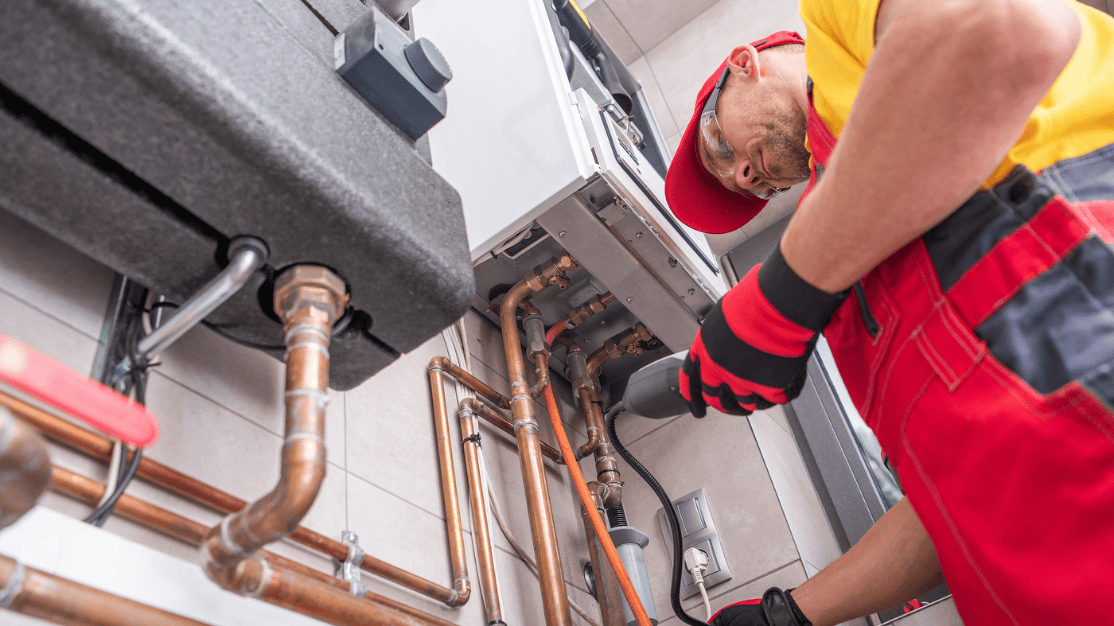
Fire Alarms, Monoxide Alarms, and Gas Detectors – Oh My!
The new natural gas detector requirement is nothing to fear. While it may seem like just another mandate on the laundry list of fire safety requirements, it’s also cheap, easy to install, and bound to save lives.

Shedding the Sheds: The Plan to Clear Sidewalk Construction
Almost 9,000 construction sheds decorate the streets of New York City, but this number might soon be drastically reduced.

The Sunny Future of Outdoor Dining
Outdoor dining is here to stay, with some caveats.

Pushing For Parking Safety: New Inspection Requirements for Parking Structures
The Department of Buildings (DOB) will require new special inspection requirements for parking structures this year.

Building a Better Future: Outsource Joins the NY Build 2024 Expo
Outsource Consultants and Outsource Special Inspections (OSI) are excited to announce our participation in the New York Build 2024 Expo, scheduled to be held this February 13-14. We’ll be joining over 35,000 other attendees to celebrate the construction and design industry at the much-anticipated networking event.

Handling The Heat: Introducing Gas Heat Limitations
On January 1st, New York City launched a major milestone for green energy.

The Decoder Guide to 2022 Special Inspections
Another year of special inspections approaches! If you haven’t kept up with all the changes made within the past year, or if you’re looking for a memory refresh, this article is for you.

Conversion Conversations: Upcoming Zoning Laws Could Simplify Office-to-Residential Conversions
Post-pandemic, New York is not the same city it once was.
The introduction of hybrid and remote work options has rendered some offices obsolete, resulting in empty commercial buildings across NYC and other major cities. To remedy this issue, city officials have proposed plans under the “City of Yes” initiative to convert offices in Midtown South into residential buildings. In one fell swoop, these proposals could address the city’s housing crisis, help reduce carbon emissions, and fill empty offices — however, the process would be complicated by zoning and building code issues.

A Fee Feast: DOB Increases Certain Fees in Time for the Holidays
Did you receive a fee recently that was larger than expected? A new update to the 2022 Construction Code by the Department of Buildings (DOB) has introduced increased fees for certain reports and applications.

High Stakes: Will Zoning Changes Allow Casinos in NYC?
New York City may allow developers to build casinos in 2024—under certain conditions.
According to a November 27th press release, the City Planning Commission (CPC) has just begun the public review process for a zoning text amendment allowing gaming facilities in NYC. Facilities would have to be licensed by the New York State Gaming Commission, and could only be located in certain commercial or manufacturing districts. Furthermore, only up to three casinos could be approved for development. These restrictions indicate an effort to mitigate the potential backlash from local communities, which have significant power in the application process.

Holiday Cheer and Construction Fear
Millions of New Yorkers and television-watchers anticipate NYC’s annual Thanksgiving parade, but festivities around the holidays can pose a nuisance for construction. If your construction project requires a permit approval from the Department of Transportation (DOT) for interfering with public transportation, it may be affected.

Elevate Your Elevators: How to Keep Your Elevator Inspections Up-To-Date
If you received an elevator inspection violation from the Department of Buildings (DOB) this October, it could be because you forgot to report a corrected defect in the past 5 years of inspections.

Rid of Rats: New Sanitization Laws Will Crack Down on Building Waste
Rats are an anticipated nuisance of city living, but recent sanitation laws might keep them off the streets for good.

Stay Posted: Remember to Display Your Energy Efficient Rating Label
If you are a building owner, you may be required to post your Building Energy Efficient Rating Label by October 31st. The label, which displays your building’s energy efficiency rating in the past year, must be publicly displayed due to Local Law 95 of 2019, as a part of a larger effort to reduce carbon emissions in NYC.

NYC’s Infrastructure Fails to Prevent Flooding — How Can It Improve?
On September 29th, Tropical Storm Ophelia brought New York City to its knees and left its inhabitants knee-deep in floodwater. What began as a “rainy week” quickly escalated into a State of Emergency that demonstrated, for a second time since Hurricane Ida in 2021, the ineffectiveness of NYC infrastructure in combating extreme weather events. Floodwater burst through the caulk of subway tiles, sewer drains clogged with swirling trash, and buses became boats. By the end of the day, the city had received as much rainfall as it usually would in two to three months, according to MTA Chair and CEO Janno Lieber. Flooding due to extreme rainfall could be written off as uncommon, but events such as these will likely only increase in frequency as climate change effects escalate. If the September flooding taught us anything, it’s that this lesson will not be the last of its kind.

Paper-Free: Determination Requests to Launch on DOB NOW: Build
This month marks a notable change to the Department of Building’s filing system. Beginning October 30, Determination requests will be submitted in DOB NOW: Build, the DOB’s public online portal.

Acting in Good Faith: The Proposed Guidelines for Decreasing Carbon Emissions
In 2019, Local Law 97 initiated a series of deadlines to reduce the greenhouse gas emissions produced by NYC buildings to net zero by 2050. As the first major benchmark looms this upcoming January, Mayor Eric Adams has recently proposed a comprehensive guideline for implementing the law. This guideline, titled, “Getting 97 Done,” introduced a two-year extension for building owners who fail to comply with the energy cap by Jan. 1, 2024. As long as building owners can prove a “good faith effort,” namely by demonstrating progress on decarbonization and sharing a plan of future compliance, the Department of Buildings (DOB) will be willing to waive penalties for building owners. “Getting 97 Done” also establishes a chance to earn credit for early electrification work in a building, which owners can apply towards their compliance efforts.
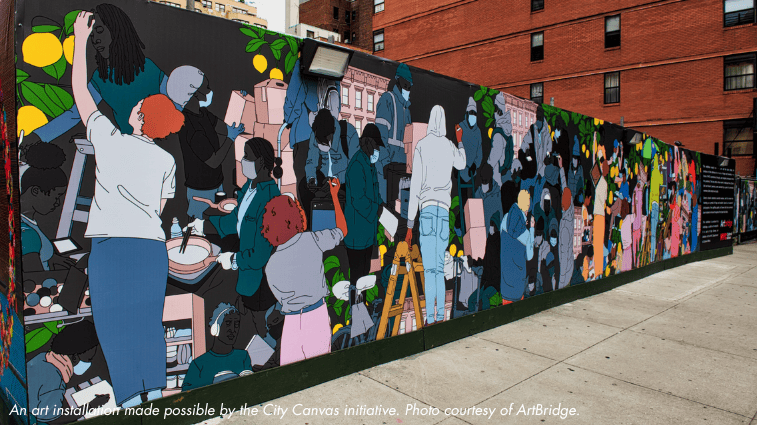
Scaffolding As Art: How Local Law 163 Will Beautify Construction Sites
New York City is eternally under construction. This is a fact of city life that both benefits and burdens its residents. As buildings rise to greater heights, scaffolding, construction fences, and sidewalk sheds litter the streets below. The ugliness of construction is something that many urban residents have come to accept, but in the past few years, the City Canvas initiative has been working to create beauty in these unexpected places.

Safety First: Local Law 126 Introduces Parapet Inspection Requirements
While most of the discussion surrounding Local Law 126 of 2021 has been regarding the new parking garage inspection requirements, the law also contains a new requirement for annual parapet inspections that’s worth taking note of.

Tiffany’s Newest Diamond: Inside Tiffany and Co’s Flagship Redesign
In April of 2023, Tiffany & Co reopened the doors of its 5th Ave flagship store with a renewed vision for the brand's future. Since its star-studded launch party, the store has received widespread coverage for its innovative and extensive redesign. This transformation was the first of its kind since the building’s construction in 1940, and its new interiors pay tribute to Tiffany’s iconic history whilst re-imagining modern luxury.

Outsource Consultants, Inc. partners with Non-Profit One Tree Planted
Helping Drive Sustainability by Planting Trees When the First Permit is Achieved for Every Project

Innovative Horizons: Exploring Discovery's World HQ in New York City
It’s been five years since Discovery, Inc., one of the world’s largest providers of informative entertainment, announced its plans to relocate its New York offices to 230 Park Avenue South. Today, that plan has finally come to fruition, with some of New York’s top design, consulting, and construction firms proud to have played a part.
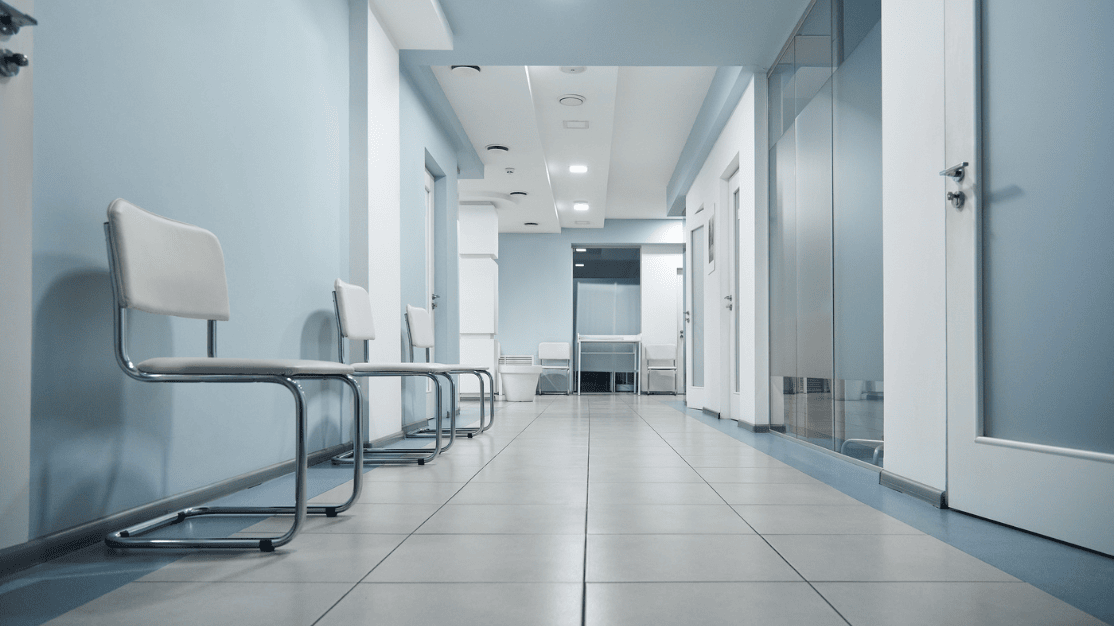
Caring for Healthcare: How the 2022 Code Updates Could Impact Healthcare Facilities
The 2022 NYC Building Code went into effect on November 7, 2022. While we’ve covered a number of general updates the new code will bring, it’s worth a moment to focus on healthcare facilities in particular.

Parking (Garage) Tickets: New Periodic Inspections for NYC Parking Garages
The NYC Department of Buildings has recently released further details on its parking garage inspection requirements.

Air Quality Alert: Environmental Protection Agency Says NYC To Upgrade to “Severe” Smog Status
Permitting rules may become stricter for certain projects in New York City in the near future, due to a proposed air quality reclassification by the U.S. Environmental Protection Agency.

Changeup Pitch: Site Safety Updates for Summer 2022
New submission rules, construction superintendent limits, revoked training, and their potential impacts on your next project.

Beep, Beep! How New DOT Bus and Bike Lanes Could Affect Contractors
If you’re a contractor with active Department of Transportation permits in New York City, a couple of recently-announced DOT initiatives may impact your projects through at least the end of 2022.

What’s Going on in Gowanus?: The New Special Gowanus Mixed Use District
How your Brooklyn filings will be affected and how you can take advantage.

City of Yes: New NYC Zoning Amendments for Growth and Sustainability
On June 1, 2022, three citywide zoning amendments were announced that could remove limitations and encourage new building and alteration uses in neighborhoods which previously would have banned them.

Aw, Rats! New Bill Could Make Pest Control a Permit Requirement
Find out what types of projects could be affected.
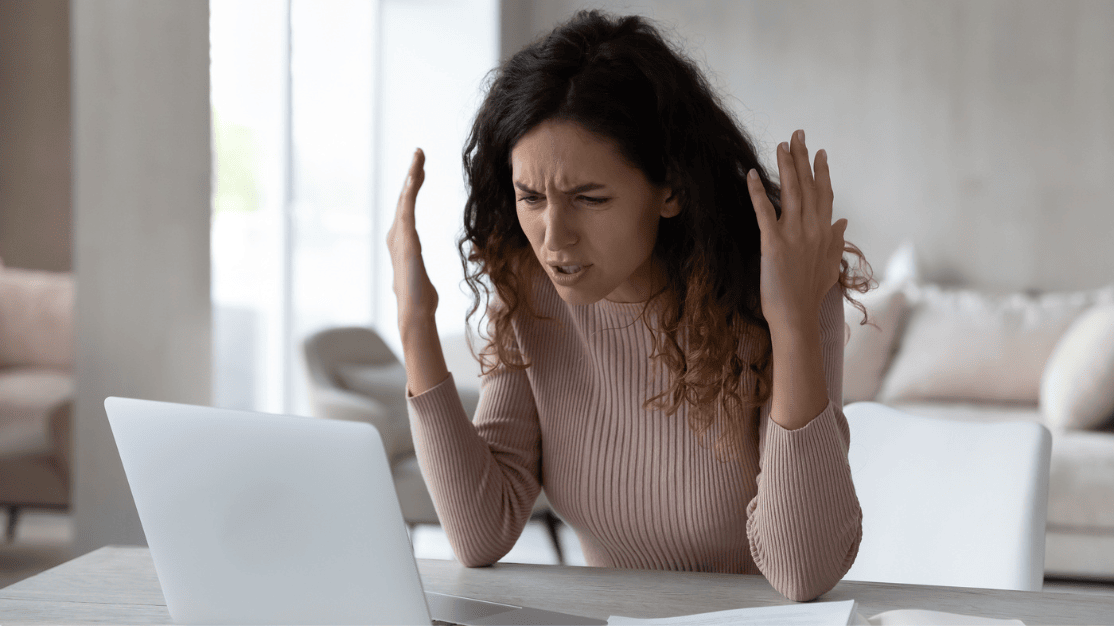
Weigh In: Zoning Diagrams Now Open for Public Challenge through DOB NOW
It is now easier than ever for the public to weigh in on certain New Building and Alterations projects in NYC.

Status Update: 2021 NYC Construction Safety Report Tracks Site Safety Progress
In March 2022, the NYC DOB released their second-annual Construction Safety Report, compiling site safety data from 2021 and comparing it against 2020 statistics.

Can You Dig It? NYC DEP Permit Required for All Work Disturbing 20,000 Square Feet of Soil
In the interest of stormwater protection, certain construction projects will now have some extra paperwork to do.

Did You Hand in Your Report? New Penalties for Failure to File Sprinkler Report
As of January 1, 2022, office building owners who have not filed a sprinkler report, certifying that sprinklers were installed in the building where required under Local Law 26 of 2004, will be subject to civil penalties.

A Faster Approach: DOB NOW No Longer Requires HPD Permit for Buildings Flagged Outside of MIH Zone
Learn about the new process for getting your MIH-flagged project approved.

Legally Binding: New Project Labor Agreement Requirement for Large-Scale Federal Construction
Under Executive Order from February 4, 2022, Project Labor Agreements (PLAs) will be required for any federal government construction project of approx. $35 million or more, starting immediately.
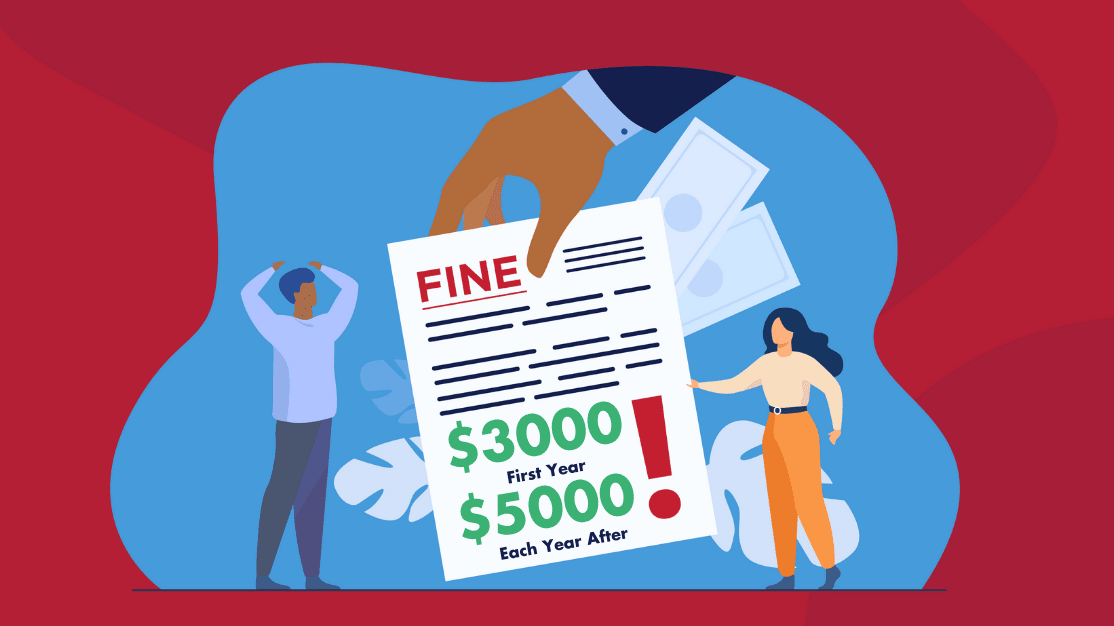
More Hurdles for Building Owners: DOB Denying Energy Efficiency Reports Due to Outstanding Violations
As of December 31, 2021, the NYC Department of Buildings no longer accepts Energy Efficiency Reports (EER) from owners who owe penalties for prior violations.

Heating Up: Local Law 154 of 2021 Brings Phased-In Gas Heat Restrictions
New buildings will need alternative heating by as early as 2024. Learn more about the new law.

New NYC Special Inspections Site Launched, with Better Options to Get Special Inspections
New York, NY – Since 2012, Outsource Special Inspections (OSI) has been a trusted source for special inspections in New York City. Led by a senior team of knowledgeable, highly qualified professional engineers, OSI performs NYC Department of Buildings-certified inspections across New York City every day, covering over 600 clients.

A Look Back: The Top 5 Decoder Articles of 2021
Check out Decoder’s highlights from the past year.

Bridges & Tunnels: Infrastructure’s Impact on NYC Construction
Why construction professionals should care about the Bipartisan Infrastructure Bill, and what to do about it.

Make an OATH: Updates on Violation Hearings and Defaults
All about the new default cancellation request deadline and attending hearings during COVID.

The Results Are In: Safety Sweeps Follow Up
Did the Zero Tolerance safety campaign get the outcome it wanted? What will it mean for the future?

A Brief Reprieve: Fee Waivers for Emergency Flood Damage Work
As of September 14, 2021, the NYC Department of Buildings will not require fees for filing and permits for Hurricane Ida-related damage.

Don’t Be Alarmed: FDNY Services Go Fully Digital
Be advised: As of September 7, 2021, all FDNY services must now be filed exclusively online.

Rain, Rain, Go Away: Flood-Resilient Construction Post-Hurricane Ida
New York City has been called the concrete jungle, but never before has the name been more apt, or more dangerous.

Overall Overhaul: DOB Website Updates You May Have Missed
From redesigns to online license applications, here’s the latest on the NYC Buildings website.

Dancing in the Street: What a Permanent Open Streets Program Might Mean for NYC Construction
In May 2021, the Open Streets program, which converted 83 miles of NYC roadways into pedestrian walkways to better accommodate pandemic outdoor dining, was made permanent for neighborhoods that chose to keep it.

Energy Experiment: The Energy Code Performance Pilot Program
The DOB recently announced a 5-month pilot program for designers to test new tools for a 100% performance-based approach to the current NYC energy code.
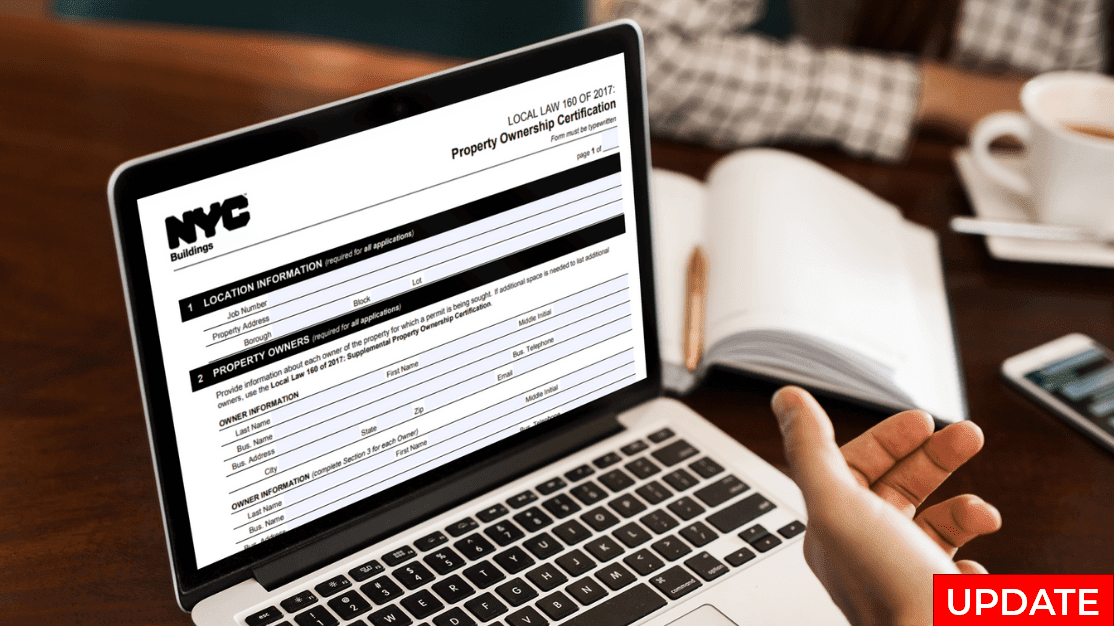
Taking Ownership: Updates on the Property Ownership Certification Form
What to watch out for when enforcement begins August 16, 2021.

Al Fresco Fiascos: Top 5 Potential Outdoor Dining Violations
Common issues to avoid to stay in the NYC Open Restaurants program.

File and Waive: DOB Launches New Portal for Façade Penalties
As of July 12, 2021, civil penalty payments and waive requests must go through DOB: NOW.

Cash In on Carbon: State Announces Incentives for Low Carbon Multifamily Retrofits
The New York State government recently announced that it has budgeted funding towards incentives for its Low Carbon Pathways for Multifamily Buildings program.

Loosen Up: DOB Rescinds Mask Rules and Other COVID-19 Construction Rules
Learn what this means for NYC construction going forward.

A New Hurdle for Building Owners: Property Ownership Certification Form
Originally set to begin on June 30, 2020, DOB NOW permit applications will need an extra form in order to get approved. A DOB service notice released on June 28, 2020 revealed that enforcement will begin in August of 2021 with the official launch date and additional details to be announced.

Surprise Inspection: How to Prepare for New Safety Sweeps
On June 1, 2021, the NYC Department of Buildings announced a slew of unannounced site safety sweeps across the city.

It’s Electrifying! New Council Bill Hopes to Limit Use of Gas Heat
As of late May 2021, a new bill introduced in the New York City Council could make a major impact on the city’s building and energy codes.

In the Zone: New Zoning Proposals for Accessibility and Health
In Spring 2021, several zoning changes to improve transit accessibility and to lower barriers for small and independent health-focused businesses were proposed and put under public review.

Redefining Moment: Proposed Local Laws Expand “Major Building” Status and Safety Requirements
How new construction safety laws may affect permits and approvals.

Don’t Blow Your Cap: Building Emissions Adjustment Deadline
Apply for altered 2024-2029 greenhouse gas emissions limits on your large building before July 2021.
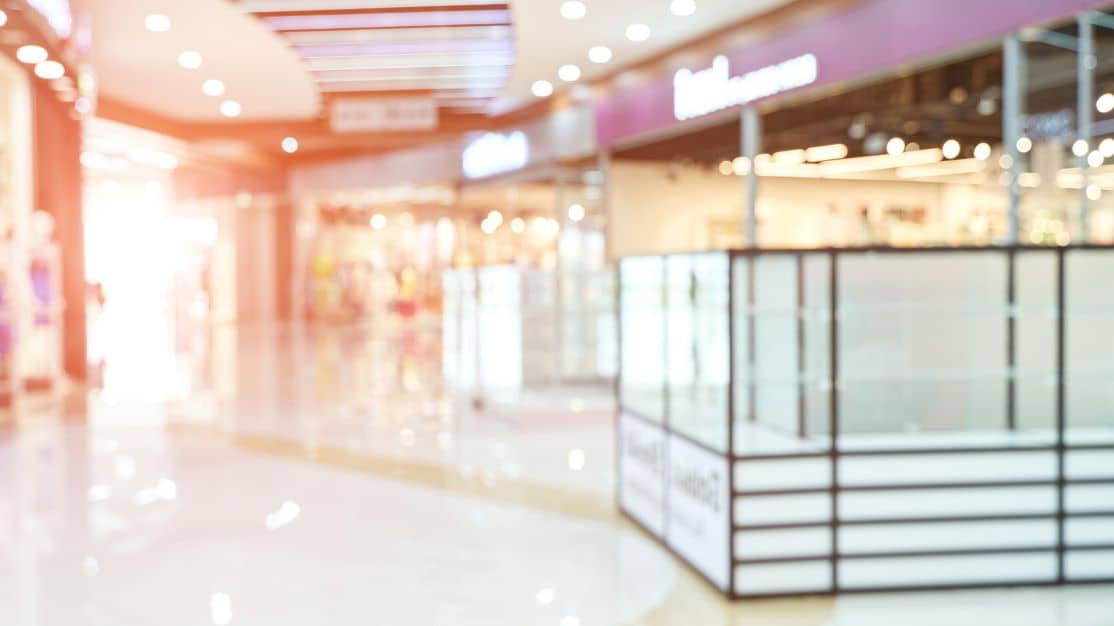
Waste Not, Want Not: Adaptive Reuse of Closed Commercial Properties
The Covid-19 pandemic accelerated existing trends in remote work, as well as the pivot away from big box and department stores, leaving many buildings and storefronts unused and empty. What can be done with these blank spaces?

For What It’s Earth
NYC Climate Code Updates and Energy Benchmark Deadline

Keeping House: New Penalties for Multiple Dwelling Violations
Certain violations after January 4, 2020 will hold up new permits for owners.

The New Frontier: DOB Introduces Remote Video Inspections
New pilot program starts March 19, 2021 for select inspections and areas.

3 Ways to Help You Manage Your NYC Building Projects Amid Agency Changes
Explore how this online dashboard tracks and resolves your critical building items.
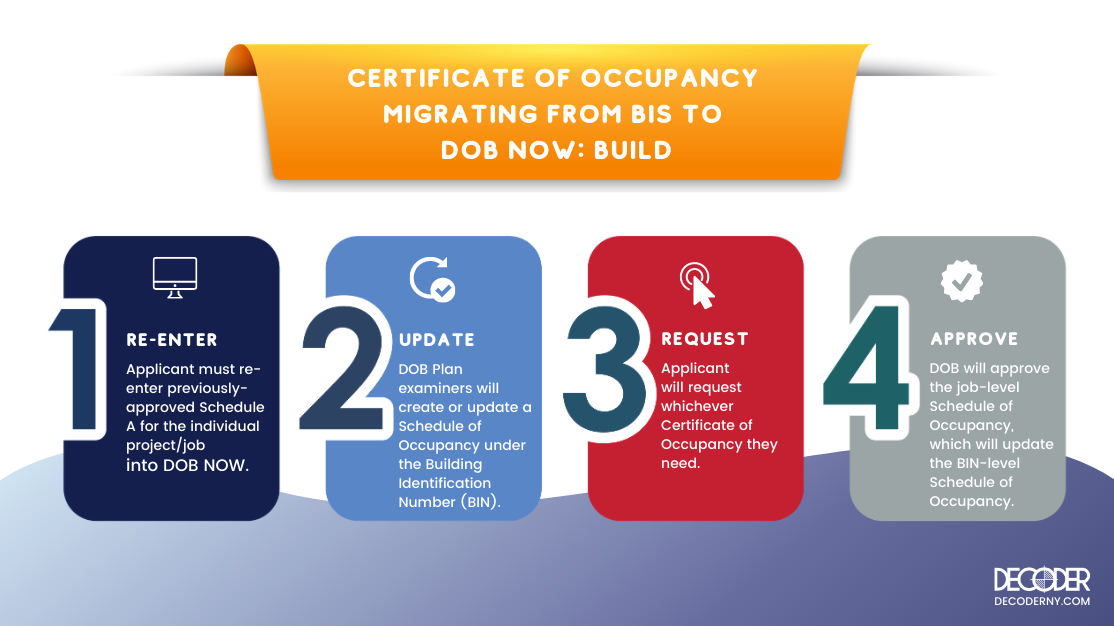
Issuance and Renewal of COs migrating to DOB NOW: Build
Learn more on how to migrate Certificates of Occupancy from BIS.

Not a Façade! Increased Penalty Reminder for FISP-Eligible Buildings
Building owners beware – Outstanding façade issues from last inspection could result in a $2,000 fine.

Local Law 191 Update: CO Detector Installation Extension
There’s still time for your commercial building to install code-approved carbon monoxide detectors.

Local Law 152: Gas Piping Inspections Deadline Extension
In order to accommodate delays from the pandemic, the deadline under Local Law 152 of 2016 for building owners in community districts 1, 3 and 10 (in any borough) to have their gas piping inspected has been extended from December 31, 2020 to June 30, 2021.

Introducing the Interim Certificate of Occupancy
What you need to know about the new type of TCO

LL15 of 2020: A Brief Guide to Bird-Friendly Building Design
New mandates go into effect January 10, 2021.

LL106 of 2019: New Tenant Protection Plan Requirements
Timeline changes, updated forms, and new standards for Registered Design Professionals go into effect on November 10.

Want to Convert Your Rooftop? 3 Things to Keep in Mind
Code considerations for making usable rooftop spaces in New York.

Reimagining Design for the New Normal: Offices
It’s more than plexiglass and 6 feet. Before you put up the partitions, check with the code.

The Grades Are In: Energy Benchmarking Deadline Approaches
Building owners must post energy efficiency ratings by October 31, 2020.

Reimagining Design for the New Normal: Museums
Museums are now open in NYC! See how these valuable cultural institutions are safeguarding patrons now and in the near future.

Local Law 191: Does Your Commercial Building Need a Carbon Monoxide Detector?
New law goes into effect January 1, 2021 – check your applicability!

Reimagining Design for the New Normal: Airports
Airports face hard times right now, but there’s an opportunity to improve design as well as safety.

Reimagining Design for the New Normal: Restaurants
Restaurants have been caught in something of a catch-22 since the beginning of the pandemic.

Reimagining Design for the New Normal: Hotels
Hotels may be down right now, but they are not out.

LL114 of 2019: Truth and Consequences
LL114 of 2019 increases penalties for false PW1 statements on occupancy.

Don’t Boil Over
Getting acquainted with DOB’s new boiler violations portal.

Bites and Barriers
How to Create Code-Compliant Temporary Outdoor Dining Seating Amid COVID-19 Crisis.

Reopening Your Commercial Building Post-NY on PAUSE
How to prep for and enforce the new normal.

Looking Ahead: The Future of Construction in New York City
What will construction look like when the stop order is lifted?

All Hands on Deck: Emergency Work during COVID-19 Crisis
How to navigate filing for emergency staging and temporary hospital projects.

COVID-19 Hits NYC Construction
Navigating filing and construction in the midst of New York on PAUSE.

Looking to the Future: The 2020 NYC Energy Conservation Code
The new code will go into effect on May 12, 2020.

Mandatory Sustainable Roofing Required for New Buildings and Enlargements
What you need to know when Local Laws 92 & 94 go into effect.

Local Law 49 - Basement Apartment Conversion Pilot Program
Select areas in Brooklyn may now be permitted to create lawful cellar apartments.

It’s 2019! It’s More Than Just a Sign
A refresher on gender neutral bathroom signs

Penalty Waivers Go Digital
A refresher on gender neutral bathroom signs
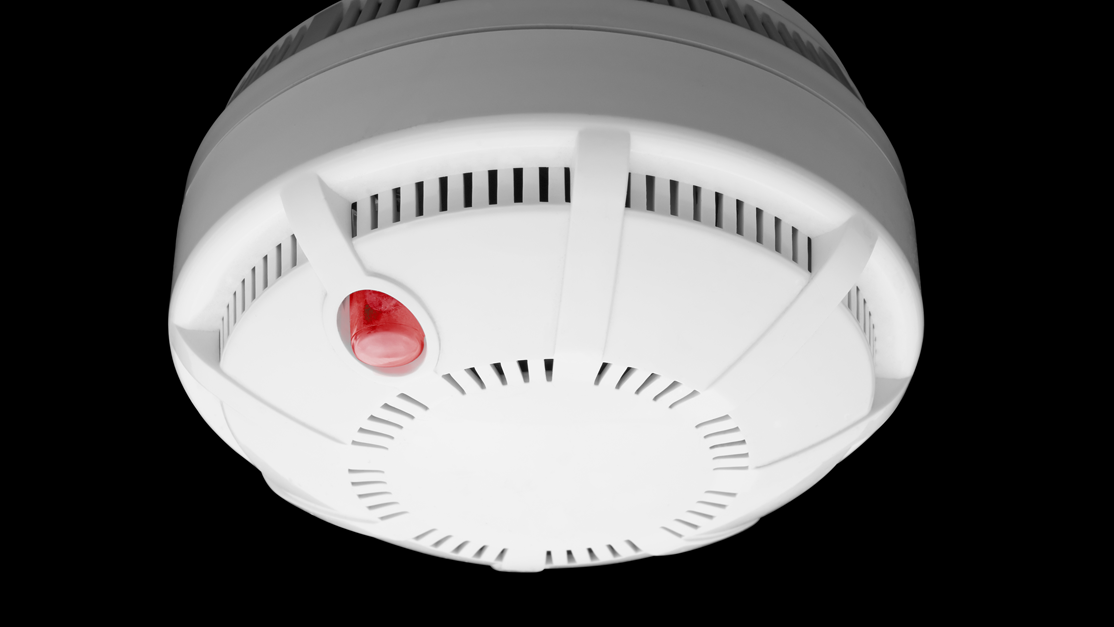
Local Law 195 - Fire Alarm Applications
If you're experiencing longer wait times for fire alarm application review, this could be the reason why.

Are YOU ready for DOB Now?
Here is what you need to know, in a nutshell.

Local Law 160
Pursuant to Local Law 160 of 2017, the Department of Buildings will now be enforcing section 28-105.1.2.

Open for Business with a FINAL Certificate of Occupancy
Would it surprise you to know that many of New York City’s most iconic landmarks, have not been issued a final certificate of occupancy?

Inspect what YOU expect
The Department of buildings has a long history of allowing Design Applicants or a designated Third-Party Inspectors the ability to conduct a final construction inspection on their projects.

It’s Crunch Time! Are you Fully sprinklered yet?
The New York City Council introduces hundreds of new local laws each year. In 2013 Local Law 141 was enacted which solidified the adoption of an NYC modification of the 2009 International Building Code (IBC) as the new city Building Code.

Not So Little Rascals
If you have ever been at home sick watching daytime television, you’ve certainly seen commercials for Rascal scooters and similar devices. These devices are typically larger than a standard wheel chair and may have difficulty maneuvering within a building.
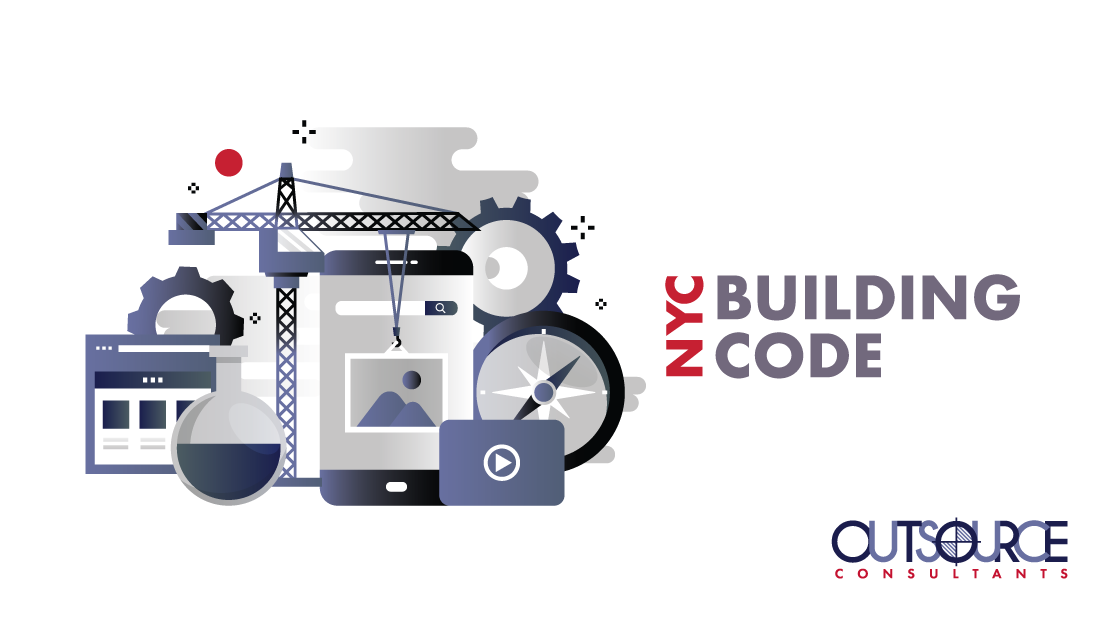
LL 141, Exceptions, Accessibility and You
The New York City Council introduces hundreds of new local laws each year. In 2013 Local Law 141 was enacted which solidified the adoption of an NYC modification of the 2009 International Building Code (IBC) as the new city Building Code

Vacant Land Ho!
Much hullabaloo was raised by housing advocates when Comptroller Scott Stringer put out a report claiming the HPD was sitting on 1,125 vacant city-owned lots. About half of those are in Brooklyn, 363 in Queens, 112 in the Bronx and 98 in Manhattan.

Running Through the Sprinklers
New York City Buildings in occupancy group E over 100 feet in height will soon have a building code fire to put out. Local Law 26 of 2004 mandates that these large office buildings be equip with a full system of automatic sprinklers by July 1, 2019. Local Law 26 applies retroactively.

Meaner Tax Liens
The DOB released two local laws that will move buildings with high ECB fines closer to foreclosure. Tax liens and distressed properties were previously limited to owners that defaulted payment.
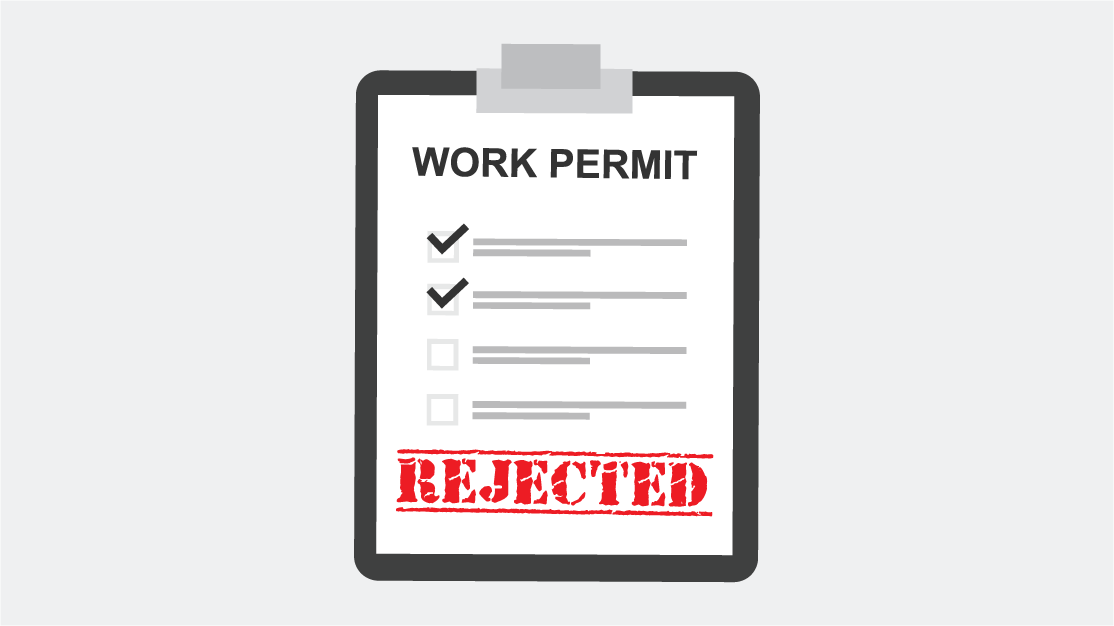
Big Fines? No Permits
New York City building owners owing heavy ECB fines will now have a tougher time pulling permits due to recently passed Local Law 160. If building owners owe more than $25,000 in “covered arrears” the DOB will not issue permits for new buildings, demolition, place of assembly or major alterations that will change use, egress or occupancy.

Zone Green Walls
In 2012, New York City’s Zone Green program amended the Zoning Code to allow wall thickness to be deducted from floor area provided the walls are energy efficient. City Planning claims New York buildings are responsible for 80 percent of the city’s carbon emissions.

Construction Safety Bill Increases Training
City Council passed its construction safety bill on September 27th, 2017. The bill makes additions to the Administrative and Building Codes to mandate worker safety training, creates a task force and imposes penalties for failure to comply.

New Website Resolves ECB Violations
Outsource Consultants has launched a convenient ECB Violations Tool for New York City building owners, property managers, owners representatives and other building professionals. Simply enter a building address to see a list of open ECB violations.

What is the Scaffold Law?
The Scaffold Law is a 1885 New York State Law the places liability on owners and contractors for injury stemming from the failure to provide scaffold safety protections required by building codes. In later years, the courts added the terms “strict” and “absolute” to liability, thus eliminating any ruling of shared liability between owner/contractor and injured worker.

Must Stop Working
In an effort to curtail the recent surge of construction injuries, the DOB has ramped up its stop work order issuances. Stop work order issuances increased three times faster than permit issuances from 2012-2016. Following approved plans and construction safety measures can prevent stop work orders.

Before You Buy
Prospective building owners should do their homework before pulling the trigger on a purchase. There could be restrictions on the property or fees unrecognized in the sales price. Large buildings will typically get a due diligence report from an expediting company.

When Apartments Combine
The combining of residential units has become increasingly popular in New York City. Residential combinations can range from the joining of two apartments to turning a larger multiple dwelling into a single family home.

Same Day Violations Slows
The DOB announced a critical change to the way the Administrative Enforcement Unit handles DOB-ECB violation corrections. Going forward, the AEU will only issue two tickets for same day Certificate of Correction service, down from three. Secondly, the AEU will only issue same day Certificate of Correction tickets for Hazardous Class 1 Violations and violations eligible for a cure.

Two Bills Target Illegal Conversions
New York City Council is currently floating two bills that may drop the hammer on illegal conversions. The first allows circumstantial evidence to be used to issue violations for illegal conversions. The second targets unlicensed professionals doing illegal plumbing and fire safety work.

Airbnb Bill Targets Advertising
On October 21st, 2016 New York Governor Cuomo signed the bill 8704-C into law, imposing fines for the advertisement of illegal short term transient occupancies. Referred to as the “Airbnb Bill,” the bill does not target Airbnb specifically, nor does it make Airbnb’s services illegal.

ECB Violation Amnesty Begins September 12th
On September 12th, 2016 the Department of Finance launched its 90-day amnesty program allowing subjects with unpaid ECB violations an opportunity to pay their fines at a reduced rate. Those that have lingering violations are encouraged to participate before the Department of Finance imposes strict collection measures that may include wage garnishment and even sale of property.
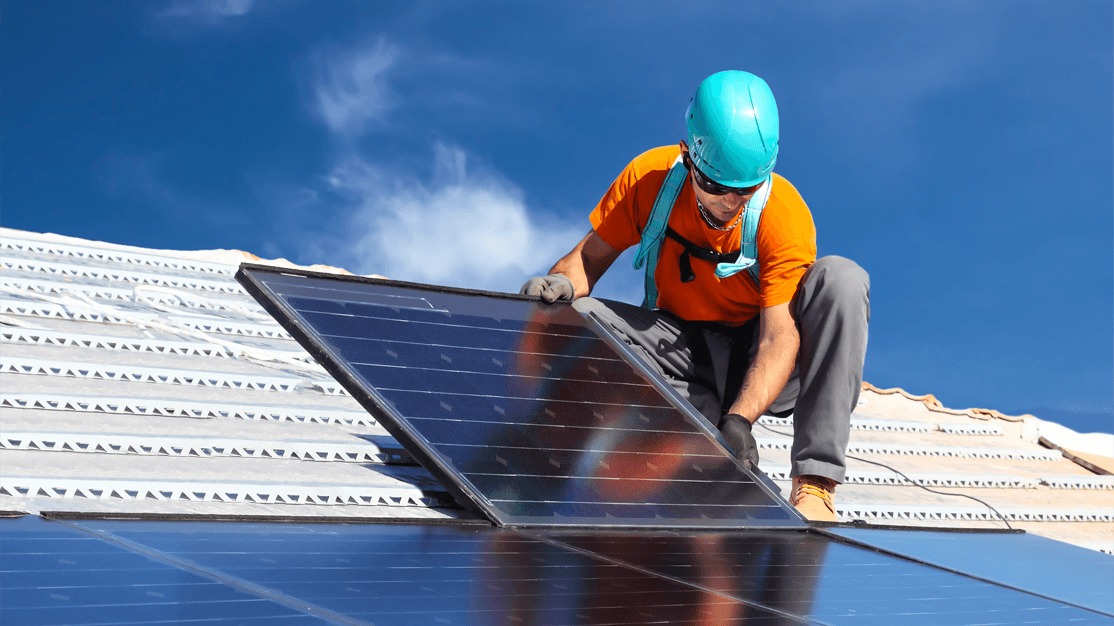
Solar Certification Expands
The DOB made it a little easier for homeowners wanting to install rooftop solar panels. Now professional certification is allowed on projects participating in the Solar Panel Tax Abatement program. Visits with plan examiners are no longer required.
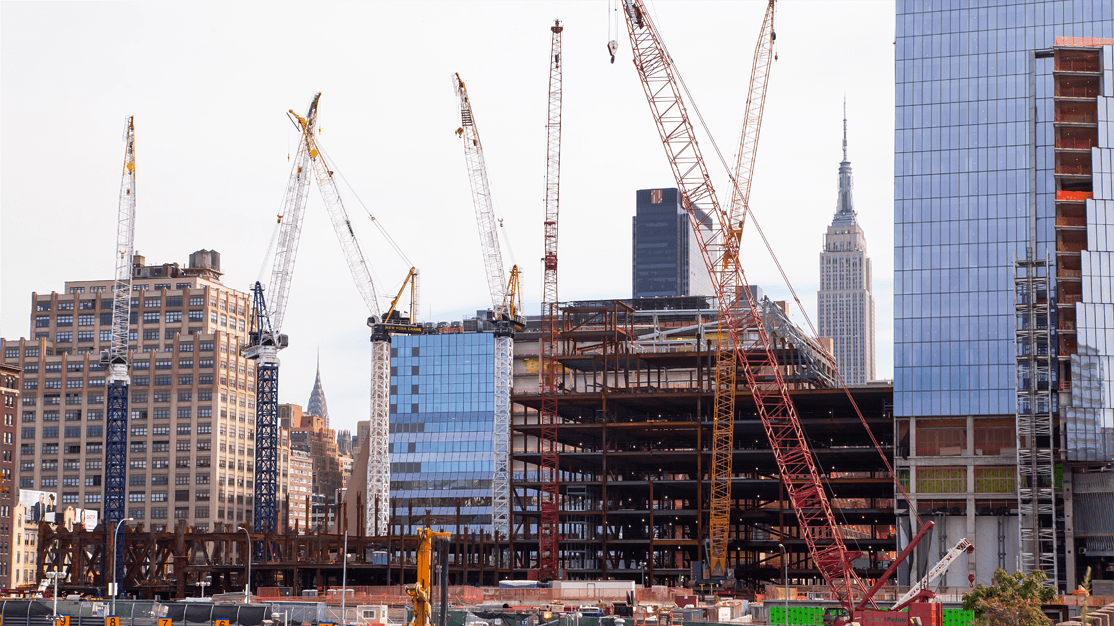
No Harassment Expands
The Department of Buildings and Housing Preservation and Development have expanded the requirement for Certificates of No Harassment to include multiple dwellings in several special districts. Previously the certificate was only required for SRO’s undergoing renovation.

Street Tree Smarts
NYC’s street tree planting requirement may leave some developers out on a limb. Since the Street Tree Amendment of 2007 all new buildings, major enlargements and certain conversions are required to plant street trees. If a building owner fails to plant street trees, the DOB will not issue a TCO.

Here Codes the Sun
Rooftop solar installations are becoming increasingly popular in New York City. Recently the DOB released Buildings Bulletin 2015-024< to address the acceptable panels, their respective installation requirements and the required testing methods.

When to Declare Property Value Calculations?
The Department of Buildings revised and clarified 1 RCNY 3601-01, a rule that addresses application requirements for buildings located in flood zones. The intent of 1 RCNY 3601-01 is to determine whether the work performed in flood zones constitutes a substantial improvement, which is defined as job applications whose total equals 50% or more of a building’s market value.

Get Ready For Inspection Ready
The DOB is preparing for its Inspection Ready launch by inviting licensees and building owners to register onto the the portal. The launch of Inspection Ready coheres with the technological overhaul the DOB seeks to undergo as part of its Building One City program.

Can Retail Buildings Keep Doors Open with the AC on?
Though leaving the doors of an air conditioned store open may provide pedestrians with needed relief, doing so is a violation of Local Law 38 of 2008. In an effort to become a greener city, the Department of Buildings enacted the local law prohibiting commercial establishments with over 4,000 square feet of retail or wholesale space from leaving doors ajar while air conditioning or central cooling systems are on.

Is Your Building Benchmarked?
As part of its Greener, Greater Buildings Plan, New York City targets its largest buildings for annual energy benchmarking. Backed by Local Law 84, benchmarking requires covered buildings to report their annual usage of water, electricity, natural gas, fuel oil and more.

New Mandatory Cooling Tower Inspections
On August 7th, 2015 the Health Department made mandatory the inspection of all New York City cooling towers within 14 days. The inspection is the result of the recent outbreak of Legionnaires Disease pinpointed to bacteria found in cooling towers. In the last month alone, Legionnaires’ Disease has claimed 10 lives and hospitalized 100, all in the South Bronx.

Is it Legal to Open a Fire Hydrant?
Yes and no. It is illegal to open a fire hydrant by yourself. However, anyone over the age of 18 can fill out a request at their local fire station to have a fire hydrant opened. A firefighter from the station will then open and close the hydrant.

DOB Launches After Hours Inspections
The Department of Buildings launched the first phase of its After Hours Inspection Program on June 1, 2015, continuing its efforts to accelerate job approvals. The program offers after hours and weekend inspections for a fee. In addition to Inspection Ready, which equips inspectors with handheld tablets, the DOB is aiming to reduce wait times for inspections to five days by 2016. In order to meet these goals the DOB plans to hire 34 additional development inspectors.

Where Do I Sign?
Though New Yorkers may feel inundated with signage, signage is heavily regulated by the Zoning Resolution’s Use Regulations in Article 3 Section 2. The Zoning Resolution heavily regulates signage in residential districts, while commercial and manufacturing districts are generally more permissive.

Barbecue York City
You may want to check the Fire Code before you put those burgers on the grill. The New York City Fire Code allows barbecuing in very few areas.

DOB Plans its Own Renovations
The DOB recently released Building One City, its document outlining specific plans for improvements in the next year. The department is scheduled for additional $4.6 million in funding for 2016 and will seek to streamline its services, modernize its technology and take punitive measures against egregious policy violators.

DOB Works Overtime
Don’t worry if you can’t make it to the DOB during normal business hours. Small Business Night, Homeowners Night and Get Back to Building are geared to alleviate the DOB’s overwhelming backlog of application and permit requests by keeping its doors open late.

Can You Put a Bathroom in Your Cellar?
In one- or two-family dwellings, an exception can be made for the ban on full bathrooms in cellars if certain requirements are met. Full bathrooms, or three-fixture bathrooms, are bathrooms containing a lavatory, a water closet and a shower or bathtub. According to Buildings Bulletin 2011-010, in order for a cellar of a one- or two-family residence to qualify for a three-fixture bathroom

Bikes in the Building
New Yorkers don’t have to lock their bikes outside the office any longer. The Department of Transportation’s Bikes in Buildings program allows tenants in commercial buildings to request bicycle access for their employees.

Balconies Exposed
The rescinded DOB memorandum on enclosed balconies (memo June 17, 1976) will make it more difficult to provide the popular amenity in New York City. In order for enclosed balconies to avoid counting toward floor area, they are required to abide by the floor area definition in New York City Zoning Resolution.

The DOB’s Rescind Bulletin
The DOB took its annual axe to a host of bulletins, directives, and TPPNs. Techinical bulletins 2014-023 and 2014-024 summarize the outgoing codes. Bulletin 2014-023 lists bulletins, TPPNs, and directives that only rescind prospectively, or for buildings under the 2014 Building Code. For a list of 2014-023’s rescinded codes click here.

Short-Term Rentals Get the 3rd Degree in NYC
Short-term apartment rentals are on the rise in New York City. According to a recent report by the Attorney General of New York Eric Schneiderman Airbnb in the City, rentals through the popular apartment rental website Airbnb increased 600% over the last four years. The report concludes that many short-term rentals are residential dwellings operating illegally as transient dwellings.

The State of the DOB
New Commissioner Rick Chandler gave a State of the DOB address at the Yale Club on December 9th, 2014. Over the last few years, the DOB has seen a boost in job and permit filings. On Tuesday, Mr. Chandler offered solutions for the DOB to streamline its operations and deal with this increase.

The Biggest Hurdle for TCO’s
Obtaining a temporary certificate of occupancy (TCO) is perhaps the most critical stage of the filing process for change of use projects. Without a TCO a building is not legally habitable. Many factors can prevent the acquisition of a TCO. The most critical, and often the most overlooked, is the signing off open applications with life safety work types.

Little e’s, Big Headaches
For New York City buildings, an E-designation can feel like a bad diagnosis. New York City’s Department of City Planning assigns E-designations to tax lots deemed to have hazardous materials, noise, or air quality levels below environmental requirements outlined the City Environmental Quality Review (Appendix C). An E-designation, also known as “little e,” often causes confusion for owners and frustration for design professionals.
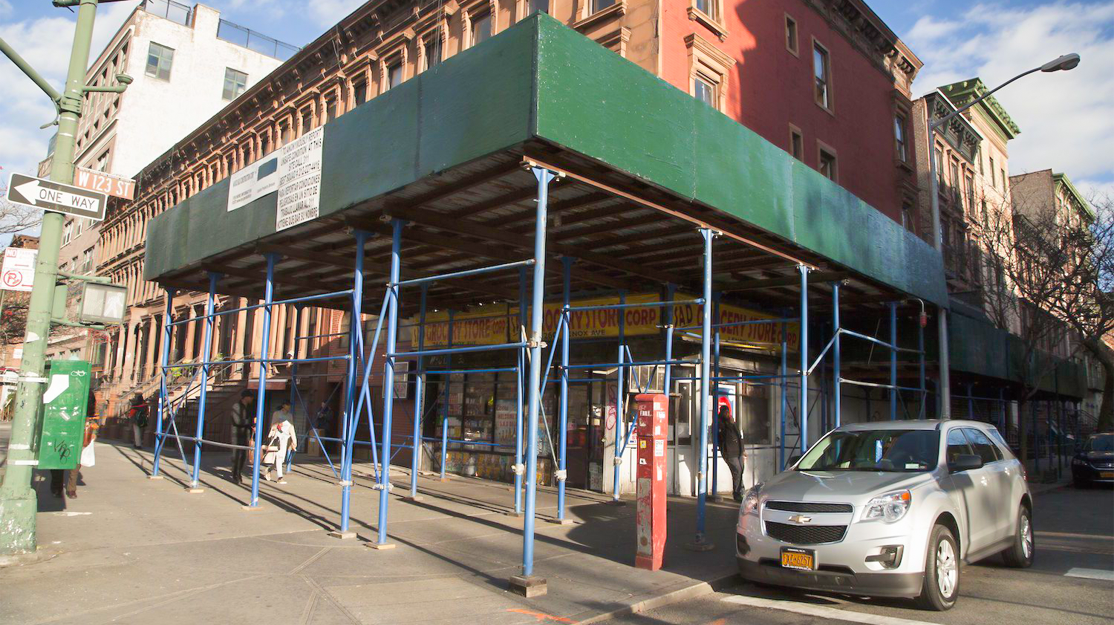
Signs O’ the Times
The Building Department requires installation of a sidewalk shed to protect pedestrians when a building owner needs to perform repairs on a section of a buildings façade at an elevation more than 40 feet above curb level. This requirement can be problematic to the retail establishments these structures are installed directly in front of.

Sign Off or Start Over
New York City property owners in FEMA flood zones filing new alteration applications should sign off their old applications first or face the consequences.

DOB Requires New Report for Balconies
The amendment of Rule 104-03 in May of 2013 requires balcony inspections be inspected and identified by a Qualified Exterior Wall Inspector (QEWI). The QEWI must submit a supplemental report indicating balconies were inspected and report a status for the balconies in the Cycle 7 report.
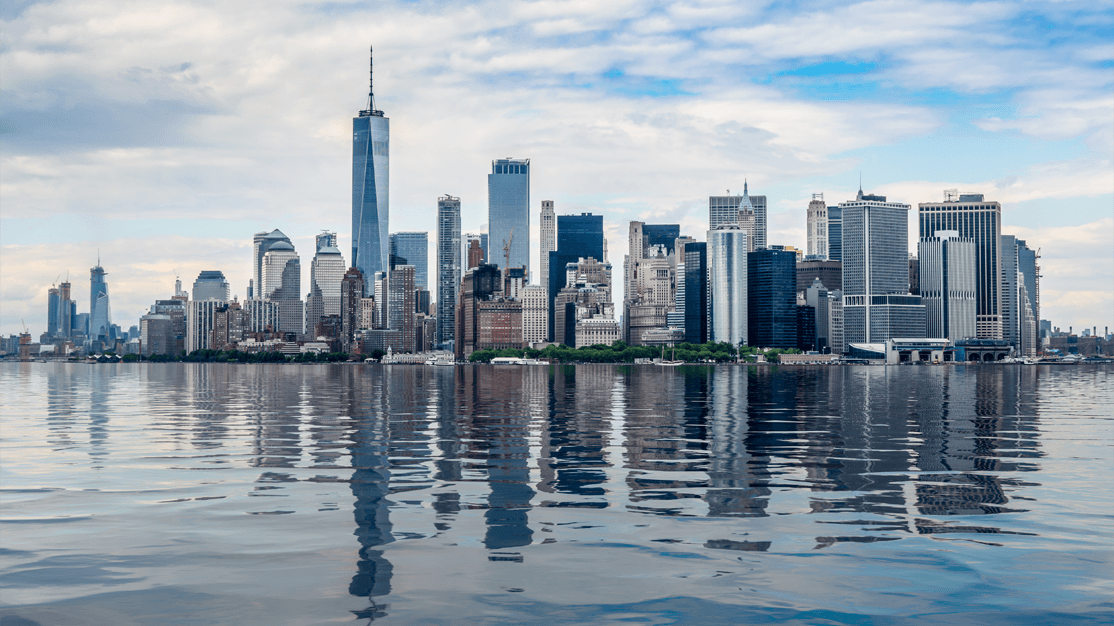
Flood Amendment Considers Streetscapes
New York City’s recently approved Flood Resilience Zoning Text Amendment means a host of changes for buildings in New York City’s flood zones. The centerpiece of the amendment is the imposition of the Flood-Resistant Construction Elevation (FRCE), defined as the FEMA flood elevation requirement plus the freeboard requirement as outlined in the building code.





